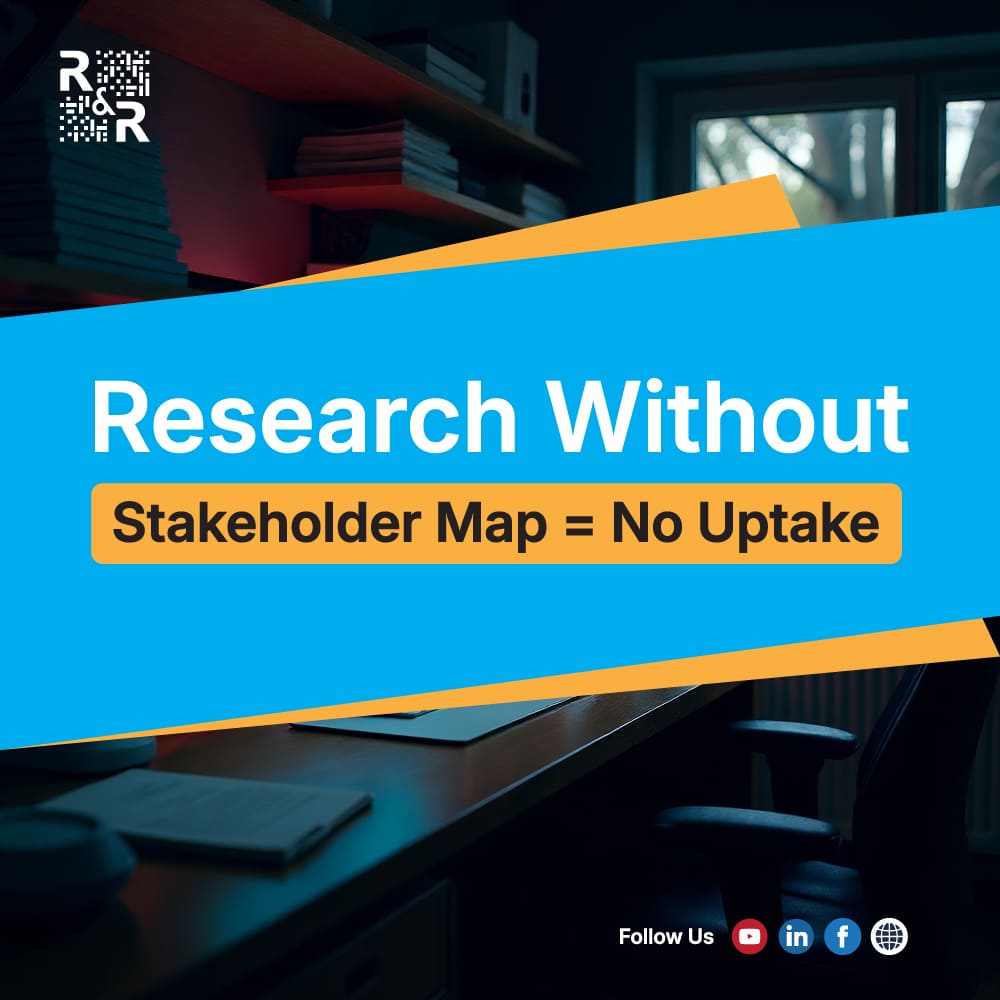Even the most evidence-rich research risks irrelevance if stakeholders are not mapped and engaged strategically. At Research & Report Consulting, we’ve observed frequent misfires—not due to weak evidence, but to the absence of a stakeholder map. This omission often leads to findings being ignored, regardless of their quality.
Blind Spots That Undermine Impact
- No Power–Interest Analysis
Stakeholders wield varying levels of influence and interest. Failing to recognize who holds decision-making power means recommendations may never reach the right channels. The power-interest grid (also known as Mendelow’s Matrix) is a foundational tool that helps categorize stakeholders according to their influence and engagement needs. - Blind Spots in Actors
Assuming government bodies are the sole stakeholders overlooks vital contributors such as NGOs, donors, private sector players, and communities. Comprehensive stakeholder mapping ensures inclusion of these often-overlooked actors, avoiding gaps in uptake strategy. - No Early Engagement
Engaging stakeholders only at the conclusion of research severely limits uptake. Early collaboration—through advisory panels or participatory design—builds trust, relevance, and co-ownership of findings. - Ignoring Conflicts & Incentives
Different stakeholders come with distinct agendas, incentives, and potential conflicts. Without mapping these, researchers risk creating blind spots that hinder adoption and effective implementation. - Weak Pathways to Policy
Outstanding evidence alone rarely translates into policy unless aligned with stakeholders’ mandates, timelines, and capacities. Uptake requires purpose-built pathways that integrate these considerations early in the design process.
Why Stakeholder Mapping Matters
Stakeholder mapping enhances research adoption by clarifying who matters and how to engage them. Tools like power-interest grids categorize stakeholders into quadrants—such as “Manage Closely” (high power, high interest) or “Keep Informed” (low power, high interest)—each calling for tailored engagement strategies. Advanced models add dimensions like attitude or salience to reflect support or resistance.
Evidence from health research shows that engagement throughout the study can co-produce, refine, and confirm research directions and relevance—and ultimately enhances uptake. Similarly, uptake strategies that combine stakeholder engagement, communication, monitoring, and evaluation are far more effective.
What We Offer at Research & Report Consulting
- Stakeholder mapping using power–interest grids: Identify key decision-makers and allies.
- Identification of hidden actors: Ensure NGOs, communities, and private actors are included.
- Uptake pathways and communication plans: Tailored strategies aligned with stakeholder needs.
- Targeted messaging: Translate findings into compelling, audience-specific outputs.
Great research without a stakeholder map is like a lighthouse with no ships watching—brilliant, but unseen.
References
ProjectManagement.com
The Global Health Network
PMCScienceDirect
The Global Health NetworkPMC
Nielsen Norman Group
PMCWikipedia
PMC

